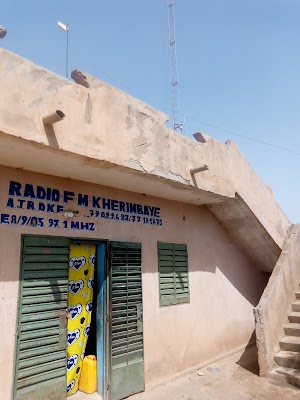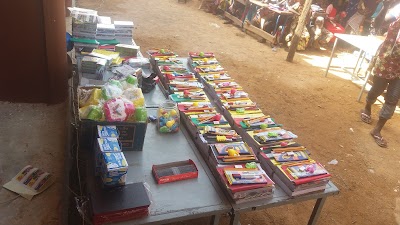Marché de Kayes (Marché de Kayes)
Related Places
Overview
Discovering Marché de Kayes
Nestled in the vibrant city of Kayes within the Kayes Region of Mali, Marché de Kayes is a bustling marketplace that beautifully encapsulates the history and culture of the area. Renowned as one of the most colorful and lively markets in the region, it offers an authentic glimpse into the traditional Malian way of life, making it a must-visit destination for tourists eager to immerse themselves in the local culture.
A Historical Hub
Established many decades ago, Marché de Kayes has long served as a critical hub for commerce and social interaction. As the city of Kayes expanded, so did its marketplace, evolving into a significant economic center that draws traders and buyers from neighboring regions and beyond. This extensive history is reflected in the market's dynamic atmosphere and the traditional methods of trade upheld by generations of vendors.
A Sensory Experience
Central to the daily life of Kayes’ residents, the market is where locals shop for fresh produce, spices, textiles, and handicrafts. For visitors, it presents a delightful sensory feast with a kaleidoscope of vivid colors, enticing aromas, and lively sounds. From the bright fabrics of bazin and wax prints to the fragrant scent of fresh fruits and spices, every corner of the market is a treasure trove waiting to be explored. The harmonious calls of vendors promoting their unique wares add to the bustling charm, creating an immersive experience that captivates the senses.
Culinary Delights
Among the market’s various sections, the food stalls stand out as a highlight. Here, visitors can sample an array of Malian culinary delights, including the famous tigadèguèna (peanut sauce stew), grilled meat skewers, and a diverse selection of tropical fruits. Street food vendors bustle with energy, providing an excellent opportunity for tourists to savor authentic Malian flavors prepared with love and tradition.
Artisanal Craftsmanship
The market is also celebrated for its artisanal craftsmanship. A leisurely stroll through the marketplace reveals numerous stalls selling handmade goods such as intricate jewelry, wooden carvings, leather products, and traditional clothing. These unique items not only make for memorable souvenirs but also offer insight into the rich artistic heritage of Kayes and its surrounding regions. Visitors can observe artisans at work, showcasing their skill and dedication in crafting each exquisite piece.
Social Fabric of the Community
One of the most captivating aspects of Marché de Kayes is its role in the social fabric of the community. It serves as a gathering place where people meet, exchange news, and celebrate local customs. The market vibrates with smiles, stories, and camaraderie among locals and visitors alike. This social dynamic provides tourists with a rare opportunity to engage genuinely with the daily lives of Malians, fostering a deeper understanding and appreciation of the local culture.
Rich Historical Context
For history enthusiasts, the market's surroundings are equally enriching. The city of Kayes, often referred to as the "Gateway to Mali," holds historical significance as a former colonial trading post and a key site during the French colonial era. Exploring the market’s historical context offers a broader perspective on how commerce has shaped the city’s development over the centuries.
Helpful Tips for Travelers
While Marché de Kayes is generally safe, it is advisable for tourists to be mindful of their belongings and to respect local customs and etiquette. Bargaining is a common practice and can enhance the shopping experience; however, it should be approached courteously and in good spirit. Engaging respectfully with vendors can lead to pleasant interactions and potentially favorable discounts, enriching the overall experience.
In Summary
Marché de Kayes is more than just a marketplace—it is a vibrant microcosm of Malian life, culture, and tradition. Its historical roots, combined with its essential role in daily social and economic activities, make it an invaluable part of the Kayes region. For tourists, the market offers a rich tapestry of experiences that encompass the sights, sounds, and tastes of Mali, making it an unforgettable destination to explore.




